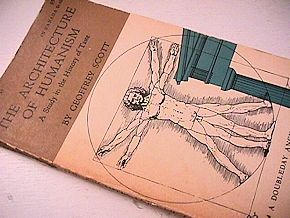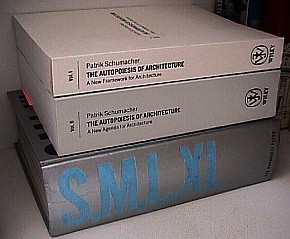2000.04.05 11:55
Re: rammed into an envelope
In bringing up the corporeal morphology 'metaphor', I was just voicing up what I believe is the so far dominant way the inside-inside of architecture is now 'imagined' (if you will). Understanding the 'puzzle', I then see the opportunity to focus of the 'other than' corporeal morphology 'metaphor' which the 'mechanics' of architecture engenders itself. Moreover, it is very easy for me to now imagine such further investigations and 'implementations' as a very real architectural evolution.
Another 'popular' dominant comes to mind as well. The inside space of architecture/buildings seems to be an ever increasing premium in terms of how habitable structures are designed, and this high valuation of the priority of (unencumbered?) space may be another real reason that the "mechanics" are most times given the absolute minimum of space and exposure. Again, I'm only suggesting an answer to the puzzle, and not denouncing 'mechanics' as having a truly viable role in the architecture of our time.
| |
2002.04.05 11:18
Re: art as architecture as art
Lately, I've become very interested in architecture that has moved (from place to place). For example, the 17th century style Japanese (Philosophers) House in Philadelphia's Fairmount Park was created/built in post W.W.II Japan, then shipped to NYC for exhibition at MoMA, and then found its way to Philadelphia, which is probably where it will from now on remain. The house is constructed of a fairly rare Japanese cedar, and the recent installation of a new cedar roof cost something like 1.6 million dollars. You could say that this building represents a real someplace else (or at least is literally composed of things from someplace else), but what it probably more truly represents is its own journey as literally moving (i.e., non-static) architecture.
| |
07040501 PMA model with flat columns
07040502 5233 Arbor Street within the Philadelphia Museum of Art model
2166i21
| |
2008.04.05 10:32
READING LIST
Page 68 of Privacy and Publicity: Modern Architecture as Mass Media is loaded, and the dyslexical error therein provides a spark capable of igniting an explosion. More truth may in fact lie with the notion that the attributes of memory and remembrance are indeed interchangably fluid rather than strictly opposed. Le Corbusier's 'doctoring' of photography (as discussed in the chapter after page 68) even seems to be a perfect example of the interchangable fluidity of memory and remembrance.
--Balloon and Prick: Modern Reading as Virtual Architecture, (forthcoming).
currently on my 'book table':
Privacy and Publicity: Modern Architecture as Mass Media
The Limits of Interpretation
The Changing Light at Sandover
Labyrinths
The Architecture of Humanism: A Study in the History of Taste
The Fifties
The Rise of Scientific Philosophy
Promises, Promises: Essays on Psychoanalysis and Literature
Difference & Repetition
Man and Time
The Anaesthetics of Architecture
The Diaries of Paul Klee
Illuminations
Reflections
Edmund Husserl's Origin of Geometry: An Introduction
"The Boudoir in The Expanded Field"
The Production of Space
Art in America, April 2008
Artforum, April 2008
51N4E space producers
Shrinking Cities
Festival Architecture
Future City: Experiment and Utopia in Architecture
Yves Brunier, Landscape Architect
...perhaps a sign of being neither student nor architect; sondern etwas anderes.

| |
2008.04.05 14:05
READING LIST
It may be well worth noting that the publication of S,M,L,XL closely coincides with the dawn of the easily-browsable/easily-publishable hypersized internet. Ends and beginnings are both extreme situations.
2008.04.05 16:49
READING LIST
S,M,L,XL is indeed a kind of "browsable" book that predates the internet in its breadth, and, for me at least, has stimulated publishing via the internet.
As far as I'm concerned, the internet makes "creating a fixed/fluid, massive, all-encapsulating text" even more possible.
2013.04.05 12:42
5 April
For a few of weeks now, I've been of the opinion that The Autopoiesis of Architecture would have been a much better book if it had been written and composed like S,M,L,XL.

16040501 OMA RFK Stadium-Armory Campus Masterplan Concepts Washington DC
17040501 Philadelphia Museum of Art ignudi pediment flat columns cracks etant donnes 5233 plans models 2142i18 b
17040502 Cut & Paste Museum plan site plan in register with PMA Parkway Interpolation 2386i07
18040501 BIG EuropaCity Paris
20040501 iiq08 model 2348i34
|

